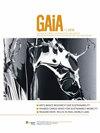将大学校园转变为可持续能源区:实施方案的多标准映射
IF 1.9
4区 社会学
Q4 ENVIRONMENTAL SCIENCES
引用次数: 0
摘要
格拉茨理工大学最大的校区将变成一个低碳能源区。我们通过使用审慎的多标准方法来探索转型的方法,以“打开”利益相关者的视角。研究结果揭示了参与者之间的差异:虽然他们对碳捕获、利用和储存都有疑问,但专家们对其他选择的评估大相径庭。最后,我们概述了一项协调不同假设和期望的战略。低碳能源区被认为在实现《巴黎协定》设定的雄心勃勃的气候目标方面发挥着重要作用。虽然预计这些地区将整合可持续性的各个方面,但评估其可持续性表现仍然具有挑战性。在这种背景下,我们采用多标准映射(MCM),这是一种深思熟虑和利益相关者驱动的多标准决策方法,来评估格拉茨理工大学目前将其最大的校园转变为低碳能源区的努力。根据范围界定访谈、焦点小组以及与关键利益相关者的11次绘图会议,确定并评估了9个核心选项。通过分析定量评估以及这些评估的具体标准和论证模式,我们的研究“打开”了对潜在实施方案的不同视角,并强调了地区层面可持续(能源)转型的复杂性和矛盾性。该研究最后建议利用未来的研讨会来调整不同的观点和期望。本文章由计算机程序翻译,如有差异,请以英文原文为准。
Transforming a university campus into a sustainable energy district: Multi-criteria mapping of implementation options
Graz University of Technology’s largest campus shall be turned into a low-carbon energy district. We explore ways of transformation by using a deliberative multi-criteria approach, in order to “open up” stakeholder perspectives. The results shed light on discrepancies
among the participants: While they share doubt about carbon capture, utilization and storage, the experts differ widely in their assessments of other options. We conclude by outlining a strategy harmonizing divergent assumptions and expectations.Low-carbon energy districts are considered
to play important roles for achieving the ambitious climate targets set by the Paris Agreement. While such districts are expected to integrate all dimensions of sustainability, assessing their sustainability performance remains challenging. Against this background, we take multi-criteria
mapping (MCM), a deliberative and stakeholder-driven multi-criteria decision-making approach, to evaluate Graz University of Technology’s current efforts to turn its largest campus into a low-carbon energy district. Based on scoping interviews, a focus group, and eleven mapping sessions
with key stakeholders, nine core options were identified and assessed. By analyzing quantitative assessments and the specific criteria and argumentation patterns that underlie these assessments, our study “opens up” different perspectives on potential implementation options and
highlights the complex and contradictory nature of sustainable (energy) transformations at the district level. The study concludes with the suggestion of using future workshops to align diverging perspectives and expectations.
求助全文
通过发布文献求助,成功后即可免费获取论文全文。
去求助
来源期刊

Gaia-Ecological Perspectives for Science and Society
ENVIRONMENTAL SCIENCES-
CiteScore
2.30
自引率
18.80%
发文量
43
审稿时长
>12 weeks
期刊介绍:
GAIA is a peer-reviewed inter- and transdisciplinary journal for scientists and other interested parties concerned with the causes and analyses of environmental and sustainability problems and their solutions.
Environmental problems cannot be solved by one academic discipline. The complex natures of these problems require cooperation across disciplinary boundaries. Since 1991, GAIA has offered a well-balanced and practice-oriented forum for transdisciplinary research. GAIA offers first-hand information on state of the art environmental research and on current solutions to environmental problems. Well-known editors, advisors, and authors work to ensure the high quality of the contributions found in GAIA and a unique transdisciplinary dialogue – in a comprehensible style.
 求助内容:
求助内容: 应助结果提醒方式:
应助结果提醒方式:


